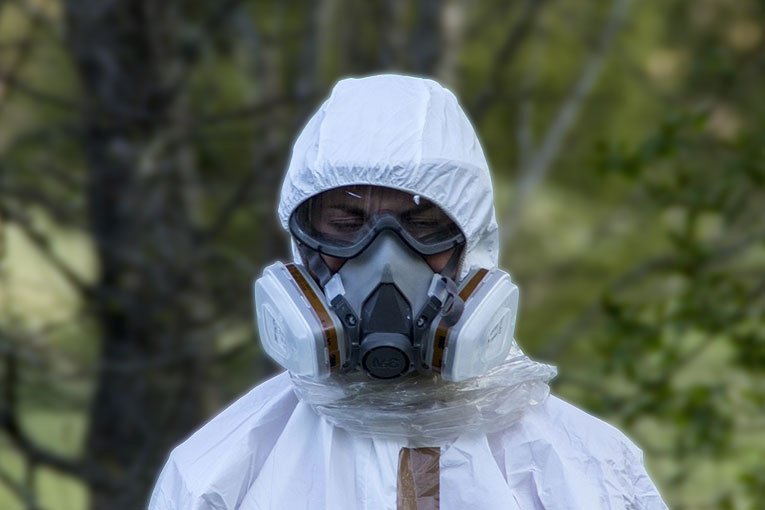Asbestos is a hazardous material that poses serious health risks when its fibers become airborne and are inhaled. Exposure to asbestos can lead to life-threatening conditions such as asbestosis, lung cancer, and mesothelioma. Therefore, proper respiratory protection is essential for anyone who may come into contact with asbestos fibers—especially workers involved in demolition, renovation, or asbestos abatement.
When it comes to choosing the best type of respirator for asbestos exposure, several factors must be considered, including the level of contamination, the duration of exposure, and regulatory requirements. This article explores the most effective types of respirators for asbestos protection and provides guidance on how to select and use them correctly.

Understanding Asbestos Hazards
Asbestos is a naturally occurring mineral once widely used in construction materials due to its heat resistance and durability. However, when asbestos-containing materials (ACMs) are disturbed—such as during cutting, sanding, or demolition—microscopic fibers are released into the air. These fibers are invisible to the naked eye and can remain suspended in the air for hours or even days.
Inhalation of these fibers can cause chronic inflammation and scarring of the lungs, leading to severe and often fatal diseases. Because there is no safe level of asbestos exposure, using the appropriate personal protective equipment (PPE), especially respiratory protection, is critical.
Regulatory Standards and Guidelines
In many countries, regulations govern the handling of asbestos and specify the required respiratory protection. In the United States, the Occupational Safety and Health Administration (OSHA) outlines strict guidelines under the Asbestos Standard (29 CFR 1910.1001 for general industry and 29 CFR 1926.1101 for construction).
According to OSHA, employers must provide appropriate respiratory protection when engineering controls and work practices cannot reduce asbestos exposure below permissible limits. The hierarchy of controls should always prioritize eliminating or reducing exposure through safer work methods before relying solely on PPE.
Types of Respiratory Protection for Asbestos
There are two main categories of respirators: air-purifying respirators (APRs) and supplied-air respirators (SARs). Each has specific applications depending on the exposure risk level.
1. Air-Purifying Respirators (APRs)
These respirators filter contaminants from the ambient air. For asbestos protection, only APRs equipped with high-efficiency particulate air (HEPA) filters are acceptable.
- Particulate-Filtering Facepiece Respirators (e.g., N95, KN95, FFP2 Mask):
- While N95 masks filter out at least 95% of particles 0.3 microns in size, they are generally not sufficient for asbestos protection.
- N95s lack the HEPA-level filtration needed to capture the ultrafine asbestos fibers effectively.
- They also do not offer full-face protection, leaving the eyes vulnerable if dust is present.
- Half-Mask APRs with P100 Filters:
- P100 filters are oil-proof and capture at least 99.97% of airborne particles down to 0.3 microns, making them much more effective than N95s.
- When properly fitted and used in conjunction with other PPE, half-mask APRs with P100 filters may be suitable for low-exposure tasks involving asbestos, such as limited maintenance or inspection.
- Full-Face APRs with HEPA Filters:
- Full-face respirators offer both respiratory and eye protection.
- They typically use HEPA filters, which are rated to remove at least 99.97% of particles 0.3 microns or larger.
- These respirators are commonly used in asbestos abatement projects where moderate exposure is expected.
2. Supplied-Air Respirators (SARs)
SARs provide clean breathing air from an uncontaminated source, offering the highest level of protection against asbestos exposure.
- Air-Supplied Hood or Helmet Systems:
- These systems deliver filtered air continuously to a loose-fitting hood or helmet.
- They do not require fit testing since they do not form a tight seal around the face.
- Ideal for long-duration tasks or hot environments where comfort and visibility are important.
- Self-Contained Breathing Apparatus (SCBA):
- SCBAs include a tank of compressed air worn by the user, similar to those used by firefighters.
- They provide the highest level of respiratory protection and are used in environments immediately dangerous to life or health (IDLH).
- SCBAs are required when entering confined spaces with high concentrations of asbestos or when performing Class I asbestos work (removal of thermal system insulation or surfacing ACMs).
Choosing the Right Respirator for the Job
The selection of the appropriate respirator depends on the nature of the task:
- Class I Work: Includes removal of sprayed-on or troweled-on asbestos-containing materials. SCBA or full-face APR with HEPA filters is required.
- Class II Work: Involves removal of ACMs not classified as Class I (e.g., flooring, roofing). Full-face APR with HEPA or supplied-air respirator is recommended.
- Class III Work: Repair or maintenance involving ACMs. Full-face APR with HEPA is preferred.
- Class IV Work: Maintenance activities involving ACMs in small amounts. May use half-mask APR with P100 filters under certain conditions.
Always consult local regulations and perform a hazard assessment before selecting respiratory protection.
Proper Use and Maintenance of Respirators
Even the best respirator will not provide adequate protection if not used correctly. Key considerations include:
- Fit Testing: Tight-fitting respirators (e.g., half-mask or full-face APRs) must undergo qualitative or quantitative fit testing to ensure a proper seal.
- Training: Workers must be trained in the proper donning, doffing, use, and maintenance of respirators.
- Inspection and Cleaning: Respirators should be inspected before each use and cleaned regularly to prevent contamination.
- Filter Replacement: Filters should be replaced according to manufacturer instructions or when increased breathing resistance is noticed.
Selecting the best respirator for asbestos exposure requires careful consideration of the job type, potential exposure levels, and regulatory standards. While N95 masks may offer minimal protection in very low-risk scenarios, they are generally insufficient for professional asbestos work. Instead, full-face APRs with HEPA filters or supplied-air respirators, particularly SCBAs, are the gold standard for ensuring worker safety.
Employers have a legal and ethical responsibility to protect their employees from asbestos hazards. By providing the right respiratory protection and ensuring its proper use, they can significantly reduce the risk of asbestos-related diseases and promote a safer working environment.


